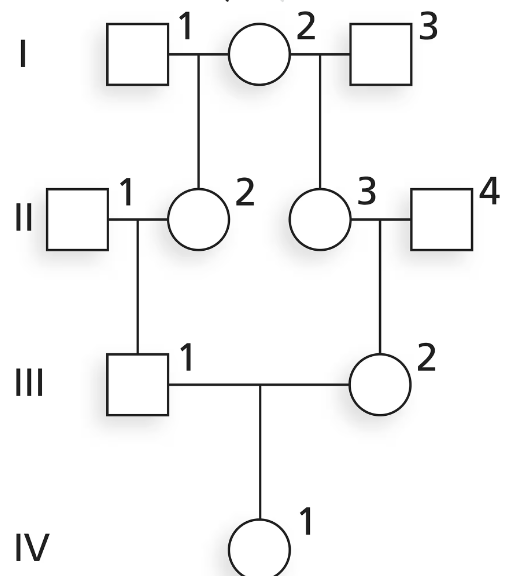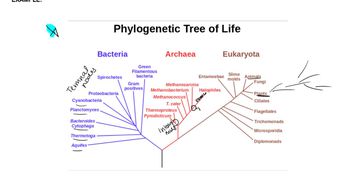List the barriers that prevent interbreeding, and give an example of each.
Table of contents
- 1. Introduction to Genetics51m
- 2. Mendel's Laws of Inheritance3h 37m
- 3. Extensions to Mendelian Inheritance2h 41m
- 4. Genetic Mapping and Linkage2h 28m
- 5. Genetics of Bacteria and Viruses1h 21m
- 6. Chromosomal Variation1h 48m
- 7. DNA and Chromosome Structure56m
- 8. DNA Replication1h 10m
- 9. Mitosis and Meiosis1h 34m
- 10. Transcription1h 0m
- 11. Translation58m
- 12. Gene Regulation in Prokaryotes1h 19m
- 13. Gene Regulation in Eukaryotes44m
- 14. Genetic Control of Development44m
- 15. Genomes and Genomics1h 50m
- 16. Transposable Elements47m
- 17. Mutation, Repair, and Recombination1h 6m
- 18. Molecular Genetic Tools19m
- 19. Cancer Genetics29m
- 20. Quantitative Genetics1h 26m
- 21. Population Genetics50m
- 22. Evolutionary Genetics29m
21. Population Genetics
Allelic Frequency Changes
Problem 33a
Textbook Question
Evaluate the following pedigree, and answer the questions below for individual IV-1. Is IV-1 an inbred individual? If so, who is/are the common ancestor(s)?

 Verified step by step guidance
Verified step by step guidance1
Step 1: Understand the concept of inbreeding. Inbreeding occurs when an individual inherits alleles from ancestors who are related, leading to a higher probability of homozygosity for certain traits. A common ancestor is an individual who appears in the ancestry of both parents of the individual in question.
Step 2: Examine the pedigree chart provided. Identify the parents of individual IV-1 and trace their ancestry back through the generations to determine if they share any common ancestors.
Step 3: Look for any individuals in the pedigree who appear in both the maternal and paternal lines of IV-1's parents. These individuals would be considered common ancestors.
Step 4: If common ancestors are identified, confirm that IV-1 is inbred by verifying that these ancestors contribute genetic material to both sides of IV-1's lineage.
Step 5: Note the names or identifiers of the common ancestors (if any) and ensure you understand how their presence in the pedigree establishes inbreeding for IV-1.
 Verified video answer for a similar problem:
Verified video answer for a similar problem:This video solution was recommended by our tutors as helpful for the problem above
Video duration:
3mPlay a video:
Was this helpful?
Key Concepts
Here are the essential concepts you must grasp in order to answer the question correctly.
Pedigree Analysis
Pedigree analysis is a method used to trace the inheritance of traits through generations in a family tree format. It helps identify patterns of inheritance, such as autosomal dominant or recessive traits, and can reveal relationships between individuals, including potential inbreeding. Understanding how to read and interpret pedigrees is crucial for evaluating genetic relationships and determining the likelihood of certain traits being passed on.
Recommended video:
Guided course

Pedigree Flowchart
Inbreeding
Inbreeding refers to the mating of individuals who are closely related genetically, which can increase the probability of offspring inheriting identical alleles from both parents. This can lead to a higher risk of genetic disorders and reduced genetic diversity. Identifying inbred individuals in a pedigree involves looking for common ancestors and assessing the degree of relatedness between individuals.
Recommended video:
Guided course

Non-Random Mating
Common Ancestors
Common ancestors are individuals from whom two or more individuals are directly descended. In pedigree analysis, identifying common ancestors is essential for determining inbreeding and understanding genetic relationships. The presence of common ancestors in a pedigree can indicate a shared genetic background, which is a key factor in assessing the potential for inbreeding in a given individual.
Recommended video:
Guided course

Phylogenetic Trees
Related Videos
Related Practice
Textbook Question
354
views


